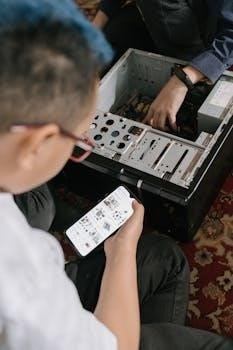Common FiTech System Issues
This section explores prevalent difficulties encountered with FiTech systems, including starting problems, fuel delivery issues, and erratic idling. Recognizing these common symptoms early can prevent bigger issues down the road. These glitches often affect the engine’s performance and overall driveability, making it vital to understand their causes.

Starting Difficulties

Experiencing trouble getting your engine to fire up is a common frustration with FiTech systems. This can manifest as a complete failure to start, extended cranking times, or intermittent starting issues. Several factors could contribute to these problems. One primary cause is often inadequate fuel delivery, which could stem from a faulty fuel pump, clogged fuel filters, or an improperly set fuel pressure regulator. Electrical issues, like loose connections or a weak battery, can also prevent the ECU from properly initiating the start sequence. Moreover, incorrect initial setup parameters or a glitch in the ECU’s software could also lead to difficulty in starting. Additionally, be aware of potential issues such as old or contaminated fuel, which can hinder combustion. Always ensure proper wiring, clean connectors, and correct sensor readings when troubleshooting start-up failures. Regularly check and maintain these to prevent such problems.
Fuel Delivery Problems
Fuel delivery problems in FiTech systems can lead to a range of issues, from poor acceleration to engine stalling. These problems often arise from several sources within the fuel system. A common culprit is a failing or underperforming fuel pump, which cannot provide the necessary fuel pressure to the injectors. Clogged fuel filters can also restrict fuel flow, leading to insufficient fuel reaching the engine. Additionally, issues with the fuel pressure regulator can cause either too much or too little fuel to be delivered, resulting in an imbalance in the air-fuel mixture. Furthermore, problems with the fuel lines, like kinks or leaks, can compromise the system’s ability to supply fuel. It is also crucial to inspect the fuel tank for any debris that could be obstructing the fuel pickup. Addressing these fuel delivery issues promptly is vital for maintaining the optimal performance of a FiTech system. Always verify that all components are clean and operating correctly.
Idle Inconsistencies
Idle inconsistencies with FiTech systems are a common frustration, often manifesting as a fluctuating or high idle speed. These issues can stem from several factors affecting the engine’s ability to maintain a stable idle. One frequent cause is a malfunctioning idle air control (IAC) motor, which regulates airflow during idle. A dirty or faulty IAC can lead to erratic engine speeds. Vacuum leaks are another significant contributor to idle problems, as they introduce unmetered air into the system. These leaks can occur at various points, such as intake manifold gaskets, vacuum hoses, or throttle body connections. Additionally, improper tuning or incorrect settings in the ECU can cause idle instability. Furthermore, issues with the throttle position sensor (TPS) may also result in inconsistent idling. Addressing these causes methodically is crucial for resolving idle inconsistencies and ensuring smooth engine operation. Regular maintenance and precise adjustments can also help prevent future problems with idling.

Troubleshooting FiTech Systems
This section details crucial steps for diagnosing FiTech system issues. It includes checking electrical connections, verifying sensor functionality, and inspecting fuel delivery components. Proper troubleshooting ensures accurate identification of problems and effective solutions for smooth operation.
Checking Electrical Connections
Begin your FiTech troubleshooting by meticulously examining all electrical connections. Ensure every connector is securely fastened and free from corrosion or damage. Pay close attention to the ECU power supply, as a stable 12-volt source is essential for proper communication. Inspect the wiring harness for any signs of pinching, fraying, or breaks that could lead to signal loss. Remember, FiTech cables can be fragile, so handle them with care during inspection. Look for loose connections at the battery, fuse box, and all sensor connections. Clean and secure connectors to prevent intermittent faults. Use a multimeter to verify voltage at crucial points. A poor electrical connection can manifest as a variety of issues, from intermittent performance to complete system failure, underscoring the importance of a thorough inspection.
Verifying Sensor Functionality
Next, focus on verifying the functionality of your FiTech system’s sensors. The oxygen (O2) sensor is particularly important, as a faulty one can cause the engine to run poorly or display incorrect air-fuel ratios. Check the manifold absolute pressure (MAP) sensor, which measures intake manifold vacuum and is crucial for proper fueling. Also, verify the throttle position sensor (TPS) is providing accurate readings. Use the FiTech handheld monitor to observe sensor data and compare readings with expected values. Inspect the sensor wiring for damage and proper connections. A faulty sensor can cause a range of issues, from poor idling to acceleration problems. Replacing a malfunctioning sensor with a new, reliable one will help maintain optimal system performance. If you suspect a sensor problem, test them individually before replacing them all.
Inspecting Fuel Delivery Systems
Now, let’s examine the fuel delivery system. Start by verifying the fuel pressure at the FiTech unit using a gauge. Ensure it matches the recommended specification, usually around 58 PSI. Check for fuel leaks at all connection points, including hoses, fuel rails, and the regulator. Inspect the fuel pump for proper operation and listen for any unusual noises. Ensure the fuel filter is clean and not clogged, which can restrict fuel flow. If you have a return fuel line, make sure the pump is running continuously, as FiTech systems can slow down the pump more than needed causing it to fall behind. Pay close attention to the injector spray pattern; it should be uniform. Dirty or stuck injectors are a very common problem and will affect engine performance. These steps will help ensure optimal fuel delivery.

Specific FiTech Problems and Solutions
This section addresses specific issues that you might encounter with FiTech systems, offering solutions for ECU communication problems, dirty or stuck injectors, and O-ring leaks on the regulator. These targeted fixes help optimize your system’s performance.
ECU Communication Issues
ECU communication issues are a common frustration with FiTech systems, often manifesting as a lack of response from the handheld controller or intermittent data display. The heart of the problem often lies within the system’s wiring and connections. Fragile cables, prone to internal breaks from being pinched or bent, can lead to signal loss. An unstable power supply to the ECU can also disrupt communication; the ECU requires a steady 12-volt source to operate correctly. Inspecting the wiring harness for damaged or corroded connectors is crucial. Ensure all connections are secure and free from debris. Another potential cause is software glitches, requiring a firmware update or even contacting FiTech support for assistance. It’s important to rule out external factors like a faulty handheld unit or incorrect settings before deeper troubleshooting. When addressing these problems start with the simplest solutions such as checking all connections and making sure your power is stable, moving to more complex solutions as needed.
Dirty or Stuck Injectors
Dirty or stuck injectors are a frequent cause of poor performance in FiTech systems, leading to rough idling, misfires, and reduced power. Over time, fuel deposits can accumulate within the injectors, restricting fuel flow and causing an uneven spray pattern. This malfunction can manifest as a sudden decline in performance, seemingly without reason. Identifying this issue often involves observing the injector spray pattern within the throttle body; a non-uniform spray indicates a problem. Sometimes, a simple cleaning with a fuel injector cleaner additive can remedy the issue. However, in more severe cases, manual cleaning or replacement of the injectors may be necessary. Debris from a fuel tank or fuel lines can also contribute to the problem, making it vital to ensure your fuel system is clean. Regular maintenance with quality fuel and a fuel filter will help prevent dirty injectors and keep your system operating smoothly. If you have a return fuel line, most say to let the pump run full.
O-Ring Leaks on Regulator
O-ring leaks on the fuel pressure regulator are another common problem in FiTech systems. The regulator’s o-ring can fail over time, leading to fuel leaks and pressure drops. This failure often results in inconsistent fuel delivery, causing issues like poor idling, hesitation, and stalling. A telltale sign of this issue is the presence of fuel around the regulator. These leaks are not always obvious and can sometimes be subtle, requiring careful inspection of the area for wetness or the distinct odor of fuel. It is critical to address this problem quickly, as fuel leaks pose a fire hazard and can also affect the efficiency of your system. Replacing the o-ring with a new one is usually a straightforward process, but using the correct size and material is vital to ensure a proper seal. Proper installation is also crucial to avoid further issues. Furthermore, checking the regulator itself for any damage could prevent a repeat of the problem. Regularly inspect your fuel system for signs of leaks as part of routine maintenance.
